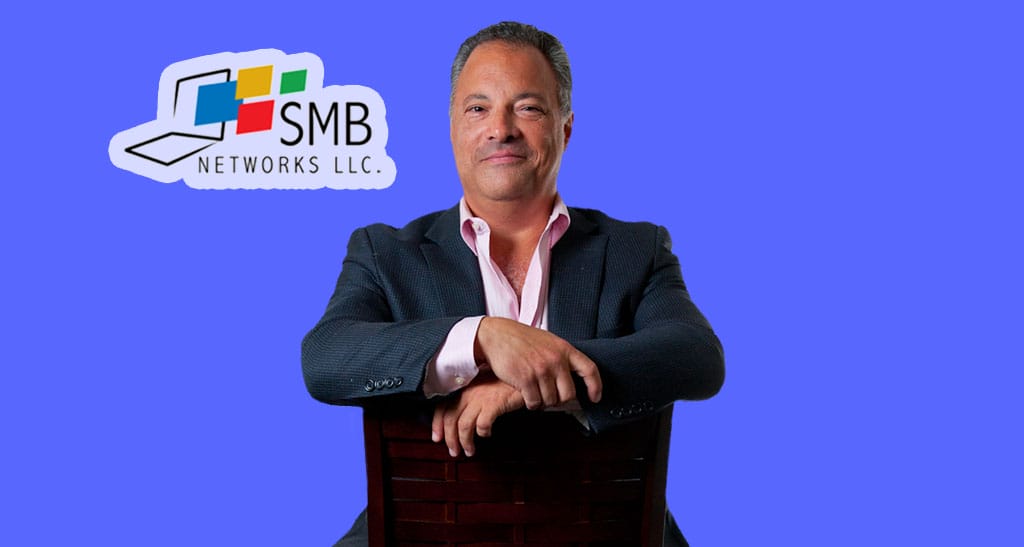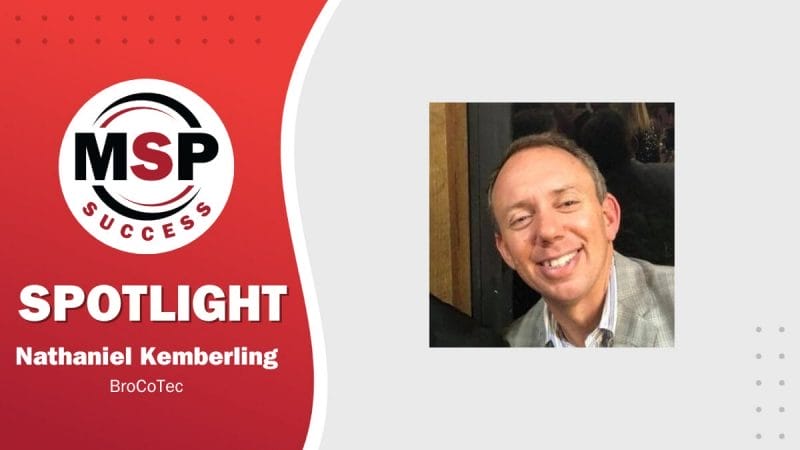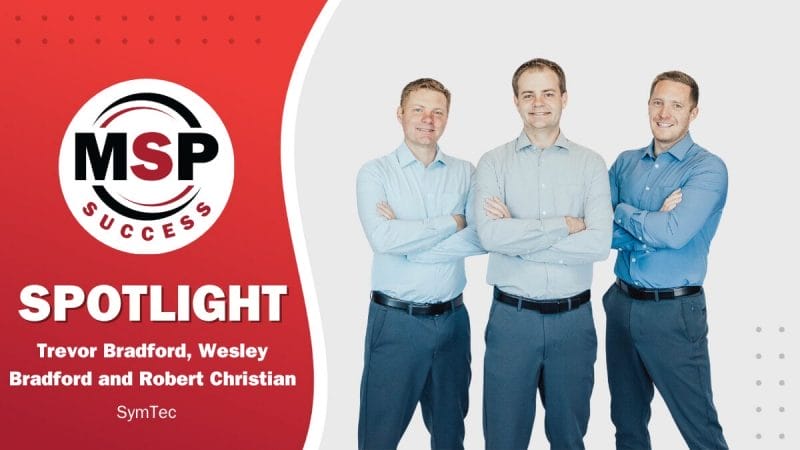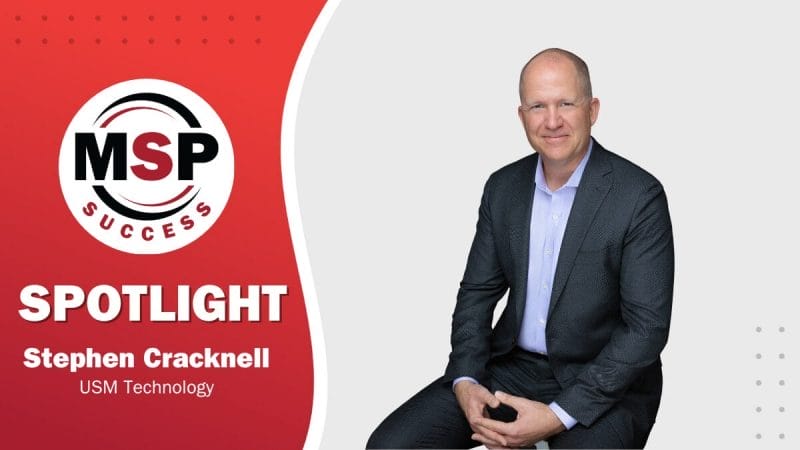In 2017, Peter Verlezza, Founder of SMB Networks, got a wake-up call…
It was payroll day, and he couldn’t make payroll…
Heart racing. Embarrassed. Distracted. Nearly a decade after he’d finally figured out how to make money in his IT business he discovered he had no way to solve this problem, nor had it occurred to him he needed a plan for it.
To make matters worse, Peter found himself thinking about work and how he was unable to fulfill his promise to his employees at a time when he was supposed to be enjoying a vacation with his wife.
The thing is, Peter had the money to make payroll. He just couldn’t access it because there was an Internet outage while at sea, and he hadn’t designated someone else to take care of the task.
“I realized I had my hands in every aspect of the business,” Peter said. “It was at that moment I comprehended that if something happens to me everybody is screwed. I looked around and saw people who were dependent on the business growing and me remaining actively involved in their future and security. At 60 years old, I recognized I had what amounted to a lifestyle business with no exit strategy and this was not sustainable.”
A member of Technology Marketing Toolkit and Producer’s Club since 2007/2008, Peter went back to his roots. In late July 2017, he attended a Technology Marketing Toolkit Rapid Implementation Workshop. Lamenting about what to do and the future of his business, he received advice from Robin Robins that changed his life and his business. “Robin suggested I turn my lifestyle business into a real business that is sustainable by marketing and growing my business,” Peter said.
Three years later, Peter’s business has grown by 142%. Last year alone, revenue was up $845,452 and his profits increased substantially too. His company was listed at 2,808 on the 2020 Inc. 5000 list of the fastest-growing companies in the U.S. He no longer has his hands in everything and isn’t worried about employees and clients being taken care of in his absence.
Here’s how Peter did it and how you can too:
Get Back To The Basics
After attending the Rapid Implementation Workshop, Peter returned home, dug into his Technology Marketing Toolkit, and began systematically implementing what he’d learned. “I went down the path of getting back to the basics,” Peter said. “We didn’t make a big sale, acquire a business, or hire a bunch of staff. We didn’t do anything out of the ordinary. It was all just hitting a bunch of singles. We were getting more from clients because we were serving them well. And we were getting more clients because we were doing the basics well.”
Some of the basics which made the biggest difference were:
Improve Efficiency
Peter confesses his business was not as efficient as it could be and a lot of that had to do with him holding things up. “One of the most important things I needed to do was get myself out of the middle of everything and stop being the bottleneck to progress,” Peter said. “I delegated non-sales marketing/duties and responsibilities to my team and began to trust the process and systems we had in place. This wasn’t easy but I did embrace the notion that starting would get us moving and we could correct course along the way.”
Recognizing that he needed to get marketing campaigns out consistently, he also hired his first-ever marketing manager.
A third way he improved efficiency was by automating his sales and marketing. “We decided to go all-in with Infusionsoft/MAP,” Peter said. “This has been a game-changer for us. Not only does it allow us to manage and organize our lists more effectively, it also simplifies our ability to get the information we need. Whether we are looking for vendors/sponsors for a seminar or client/prospects to invite to training or send our next campaign to, the information is at our fingertips.”
Quantify your target audience
Peter identified that his target audience is medical practices years earlier, however, this time he went deeper and got extremely specific with whom they do business.
“Even though I had a well-defined target market I felt it could use some additional refinement,” Peter said. “We got into the emotional drivers, refined the list of psychographic elements, and began to expand our list of sweet spot prospects. In my opinion, this is the single most important thing you can do to impact your business.”
Peter defines his audience in this way: “We do business with private community-based healthcare and medical practices that are in specialties, not owned by a managed service organization or a hospital, but instead are managed by a medical practice executive with multiple locations or complexity to their network and infrastructure,” Peter said.
By more clearly defining his target audience, Peter is connecting with more of his ideal targets and finding it easier to communicate with them in ways that are uniquely appropriate to them. For example, Peter discovered that his audience wants their vendors to be a part of their community. Peter looked at what organizations his clients were a part of and got involved.
“I saw that all of my existing clients belonged to the Connecticut chapter of the Medical Group Managers Association,” Peter said. “I thought that’s not a coincidence. That is the group that medical practice executives belong to. So I became a member of it and now I do all sorts of things to help the organization and the medical practice executives.”
He also saw that they didn’t like to be sold, want to be educated, inspired, and humored, and incorporated this into the way he communicates with them during seminars and webinars.
Hone your Unique Selling Proposition (USP)
After defining his target market, Peter went to work on his USP. “I wanted to make it truly unique and relevant to our target market,” Peter said.
When defining his target audience, Peter identified his audience’s biggest problems and then used this information to create his USP. “My medical practice executive is a person whose time is not their own, and they really don’t have a lot of it,” Peter said.
With that in mind, Peter built in promises such as answering calls within 60 seconds and a white-glove concierge service that takes care of anything and everything his medical practice executive needs – even if that is outside their IT services. “If a medical practice executive that is a client calls and tells me she needs someone to shovel her snow, I’m going to find a subcontractor, engage that subcontractor to go do that, and then bill the client for it,” Peter explained.
Once he completed narrowed his target audience and refined his USP, Peter committed his website to his primary target audience: medical practice executives.
Upsell And Cross-Sell Products/Services.
Peter got serious about serving his clients better by upselling and cross-selling during Quarterly Business Reviews (QBRs). Last year alone, he converted 12 clients over to their VOIP offering and medical security offering. The total upsell for both was $115,000 in hardware and $9975 in monthly recurring revenue.
2019 QBRs brought in over $300,000 of hardware sales and $8260 in monthly recurring revenue. “The most obvious was Win 7 to Win 10 upgrades,” Peter said. “Although necessary, the discipline of doing the QBRs compelled clients to agree to these upgrades without delay.”
Peter got creative with payment schedules and utilized after hours and weekends to complete QBRs. This not only benefitted the client but also the techs/engineers with overtime and extra hours pay.
“I have always said that my clients are someone else’s prospects,” Peter said. “These campaigns ensure you are in front of your clients regularly to discuss their businesses and give you the opportunity to solve their problems with new products/services they need. If someone had one service and didn’t have another, I would offer them those services.”
A REAL Shock and Awe Package
Peter also redid his Shock and Awe package. “I remember when Robin asked for volunteers to have their Shock and Awe package evaluated,” Peter said. “I got this back from her; ‘This couldn’t be any less shocking or awe-inspiring’”. I knew what she meant, but I figured I had the Shock and Awe checked off my list.”
Peter embraced the program and used the “Done For You Shock and Awe” through Technology Marketing Toolkit. “Talk about instant credibility and positioning!” Peter said. “Robin was right, no one ever said my Shock and Awe package was “impressive” till now.”
Be Consistent
“We didn’t make a big sale or acquire a business,” Peter said. “We didn’t do anything out of the ordinary. It was all just hitting a bunch of singles. We were getting more from clients because we were serving them well. And we were getting more clients because we were consistently doing the basics well.”
One way Peter did this was by consistently sending out 25 letters per week using the “Bad Date” letter campaign from Technology Marketing Toolkit. “Our farm list served us well for years but had become stale and unresponsive,” Peter said. “We used the ‘bad date’ letter to start list building. This is the gift that keeps on giving. Not only did we close business from this but it also increased our farm list while ensuring the current information was accurate and didn’t get stale.” Peter advises, “Be diligent and consistent, do it weekly.”
“The personal benefits to me and my team of committing to Technology Marketing Toolkit’s systems and processes have been huge,” Peter said. “Besides the obvious of increased revenue, cash flow, and profit, I was able to buy a building, renovate it and pay out real bonuses. I am no longer the bottleneck; I can take my 2 vacations a year and be confident that all will be well. Plus, our charitable giving has increased with our financial successes and my ability to give of my time. We continue to support the local food bank and their efforts to feed at-risk children and were able to double our donation of time and money, which made a significant impact to the food bank. The future is looking good because we have a plan.”
If you want to get started with the same program as Peter, and want help in marketing and growing your business right now? Go to:









